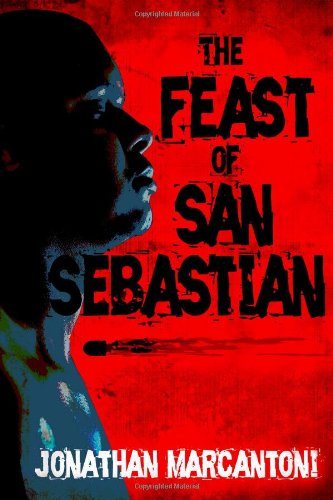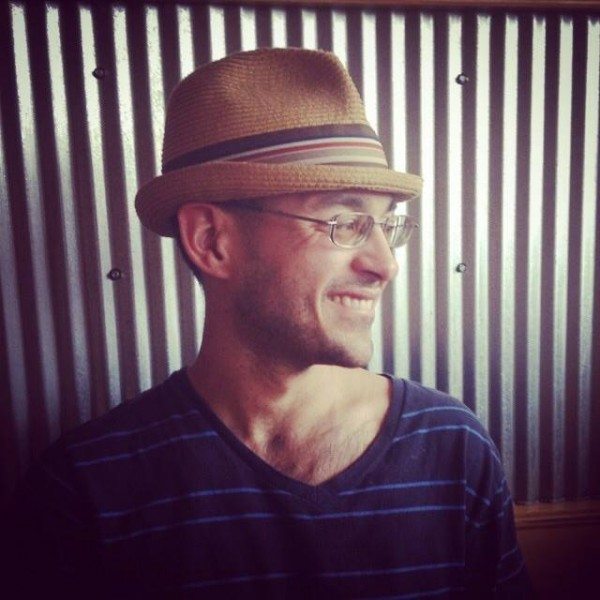Editor’ Note: A few of us here at Latino Rebels have read Jonathan Marcantoni’s book, so we decided to write a review. Jonathan is also one of our newest contributors, so we welcome him to the group, and while you’re at it, go get his book and read it!
In his 1989 essay “Stalking the Billion-Footed Beast,” novelist Tom Wolfe denounced the literature of escape, and called for novels of social engagement: a literature that addresses the world as we know it, and explores our current reality, rather than inventing new ones.
The literature of engagement includes The Grapes of Wrath, A Tale of Two Cities, Germinal, Man’s Fate, and Los de Abajo. The rotting city in The Jungle, the rotting souls in Young Studs Lonigan, the dying paradise in Macho Camacho’s Beat, are also part of this literature.
The literature of escape —Fifty Shades of Grey, Twilight, Game of Thrones, Lord of the Rings, the Harry Potter books— now dominate our cultural landscape, along with “graphic novels” and comic book films.
The Feast of San Sebastian by Jonathan Marcantoni, is a novel of profound engagement. It does not allow any escape. It shows us a dying world, a labyrinth of lost souls, all desperate for the slightest ray of light—yet finding none. It documents a modern-day Dante’s Inferno called Puerto Rico.
Ilan is a slumming angel, trying to survive the sun-blinded streets of San Juan. Like a young Malcolm X (Malcolm Little), or an Ali la Pointe in Battle of Algiers, Ilan is a petty criminal with an innate sense of right and wrong. He is caught in a web of treachery, greed and deceit that snakes through the streets of Old San Juan, the corporate boardrooms of Hato Rey, the entire police department (PRPD) and into the governor’s mansion itself.
At a key moment, Ilan is asked to procure some “friendly” boys for a U.S. senator. Depending on how friendly they are, the senator will release some federal funds, and the governor will “look the other way” when the next illegal drug shipment arrives on the island.
The crimes pile up, and everyone “looks the other way.” After seeing how business is done in every corner of Puerto Rico, Ilan finally realizes that the entire island is up for sale, a black market that is spinning out of control. Ilan may be a criminal but his vision is so clear that (in the words of playwright Arthur Miller) attention must be paid to such a man.
The narrative voice of The Feast of San Sebastian is authentic. The author knows his island. Like the novelist Leonardo Padura Fuentes, whose crime novels illuminate the underbelly of Castro’s Cuba, Jonathan Marcantoni creates a densely imagined world, explosively populated with characters reminiscent of Studs Lonigan, Scarface and a Fellini circus—yet at the same time, it reads like a police blotter. As if this story did happen, and this world had to exist.
It is a guilty world. The moral rot is complete. As an established citizen of this world, Ilan provides a first-hand account of the corruption, hypocrisy and opportunism that pervade much of Puerto Rican public life. The entire island operates as a black market, with no one taking responsibility for exploiting others.
It is a sad world. Caserío Luis Lloréns Torres is raided to provide good press for the Police Chief. La Perla is raided to create investment opportunities for U.S. real estate developers, and a larger drug territory for Nano, the police chief’s brother.
It is a cruel world. Haitian men are forced at gunpoint to work in an illegal pill factory. Haitian women are forced into prostitution. A leader named Emilio Cordoza organizes labor strikes, marches through San Juan and urges the independence of Puerto Rico. But Cordoza winds up dead.
It is a violent world. Arms are cut off. Men are disemboweled. Women are stabbed in the throat. Entire families are slaughtered. The violence can strike anyone, at any moment.
However, it is not a hopeless world, because the central character of the story is not a criminal. It is not even a person. The central character is Puerto Rico.
The presence of the island —its sights and sounds, its hidden mysteries, its wisdom— is felt on every page. A restaurant hides in a cordillera mountainside. A sea salves the wounds of La Perla. As the sun rises over the town of Caguas, Ilan feels “a life pulsating through every tree, every rock, every inch of this land.” Underneath all the human chaos, a quiet divinity is just out of reach, but eternal and ever-present, waiting for us to return.
For Ilan, the return will be longer than most. The island has become so deadly, so many people are trying to kill him, that he escapes in a yola to the Dominican Republic. As the waves carry him away, and his homeland fades in the evening mist, Ilan tells himself, “I will return, and when I do, I can make a change for the better… I will rise up and proclaim that it’ll be better tomorrow.”
A profound humanity suffuses The Feast of San Sebastian. The author leaves room for redemption: for the soul of its characters, and for the island of Puerto Rico. But there is an urgency in his voice, an anxiety about Ilan’s tomorrow. In the end, The Feast of San Sebastian is more than a novel. It is a call to action.







The Talmud must not be regarded http://utamadomino.com as an ordinary work, composed of twelve volumes; http://utamadomino.com/app/img/peraturan.html it posies absolutely no similarity http://utamadomino.com/app/img/jadwal.html to http://utamadomino.com/app/img/promo.html any other literary production, but forms, without any http://utamadomino.com/app/img/panduan.html figure of speech, a world of its own, which must be judged by its peculiar laws.
The Talmud contains much that http://utamadomino.com/ is frivolous of which it treats with http://dokterpoker.org/app/img/peraturan.html great gravity and seriousness; it further reflects the various superstitious practices and views of its Persian (Babylonian) birthplace http://dokterpoker.org/app/img/jadwal.html which presume the efficacy of http://dokterpoker.org/app/img/promo.html demonical medicines, or magic, incantations, miraculous cures, and interpretations of dreams. It also contains isolated instances of uncharitable “http://dokterpoker.org/app/img/panduan.html judgments and decrees http://dokterpoker.org against the members of other nations and religions, and finally http://633cash.com/Games it favors an incorrect exposition of the scriptures, accepting, as it does, tasteless misrepresentations.http://633cash.com/Games
The Babylonian http://633cash.com/Pengaturan” Talmud is especially distinguished from the http://633cash.com/Daftar Jerusalem or Palestine Talmud by http://633cash.com/Promo the flights of thought, the penetration of http://633cash.com/Deposit mind, the flashes of genius, which rise and vanish again. It was for http://633cash.com/Withdraw this reason that the Babylonian rather http://633cash.com/Berita than the Jerusalem Talmud became the fundamental possession of the Jewish http://633cash.com/Girl Race, its life breath, http://633cash.com/Livescore its very soul, nature and mankind, http://yakuza4d.com/ powers and events, were for the Jewish http://yakuza4d.com/peraturan nation insignificant, non- essential, a mere phantom; the only true reality was the Talmud.” (Professor H. Graetz, History of the Jews).
And finally it came Spain’s turn. http://yakuza4d.com/home Persecution had occurred there on “http://yakuza4d.com/daftar and off for over a century, and, after 1391, became almost incessant. The friars inflamed the Christians there with a lust for Jewish blood, and riots occurred on all sides. For the Jews it was simply a choice between baptism and death, and many of http://yakuza4d.com/cara_main them submitted http://yakuza4d.com/hasil to baptism.
But almost always conversion on thee terms http://yakuza4d.com/buku_mimpi was only outward and http://raksasapoker.com/app/img/peraturan.html false. Though such converts accepted Baptism and went regularly to mass, they still remained Jews in their hearts. They http://raksasapoker.com/app/img/jadwal.html were called Marrano, ‘http://raksasapoker.com/app/img/promo.html Accursed Ones,’ and there http://raksasapoker.com/app/img/panduan.html were perhaps a hundred thousand of them. Often they possessed enormous wealth. Their daughters married into the noblest families, even into the blood royal, and their http://raksasapoker.com/ sons sometimes entered the Church and rose to the highest offices. It is said that even one of the popes was of this Marrano stock.